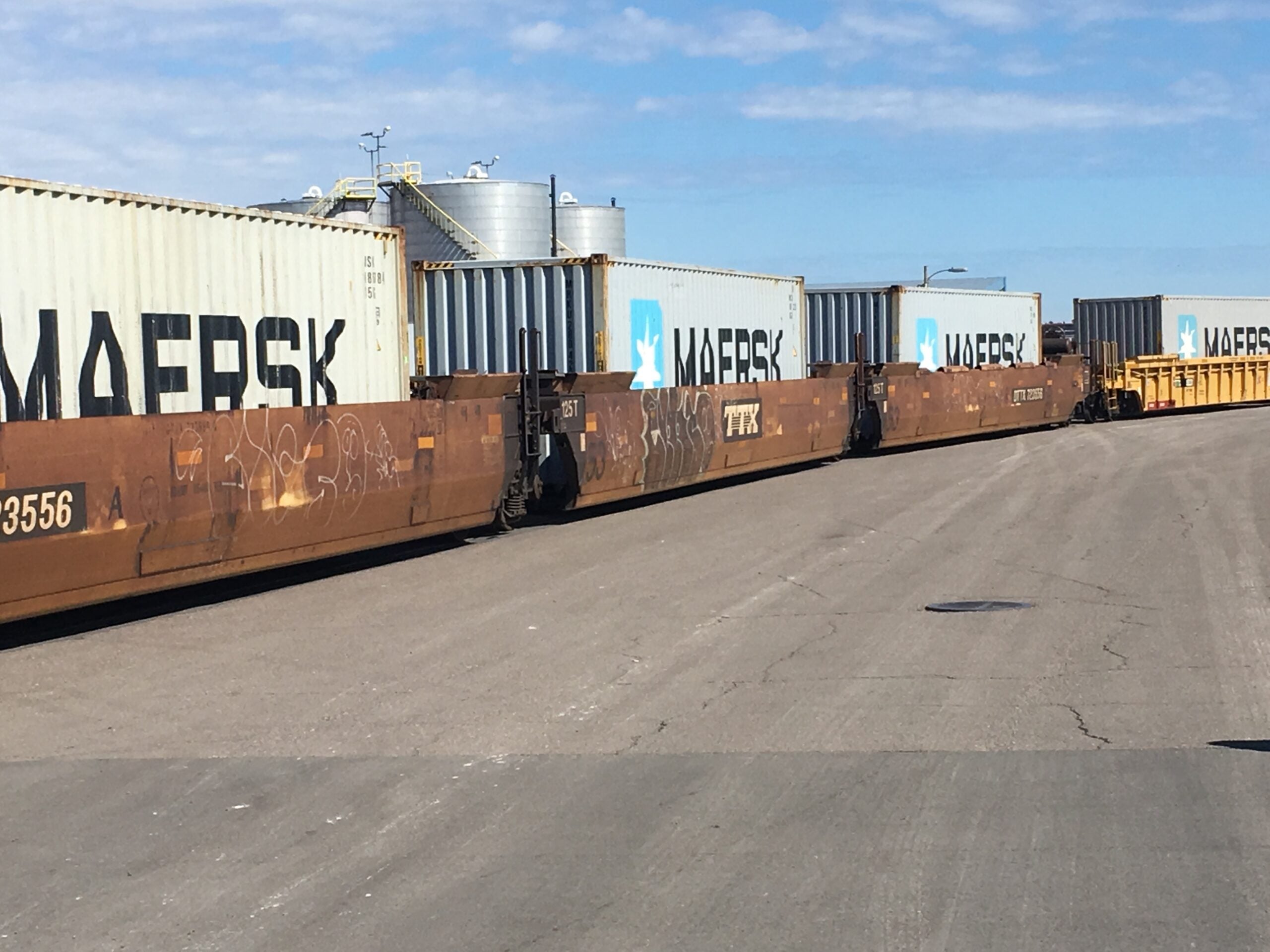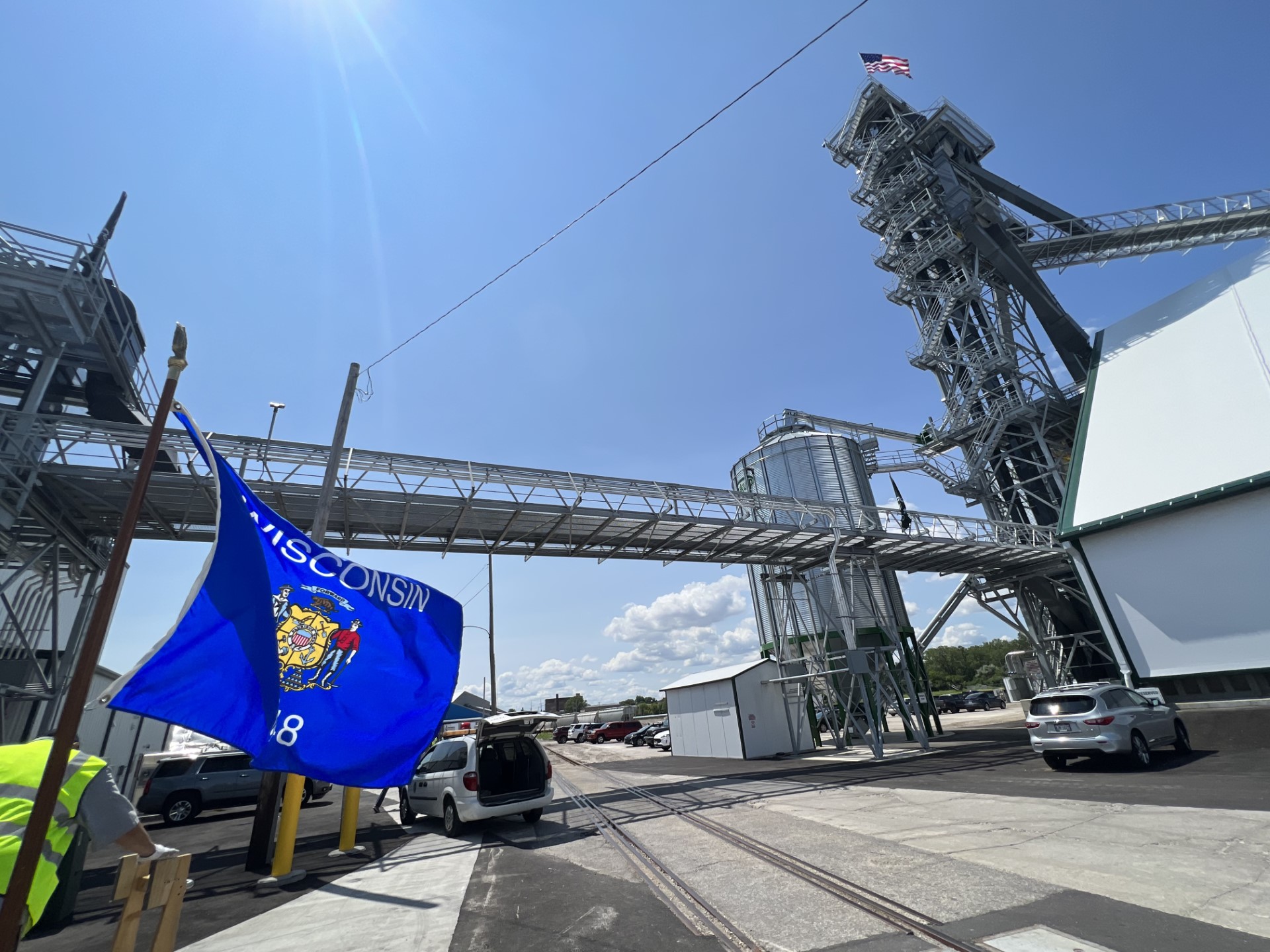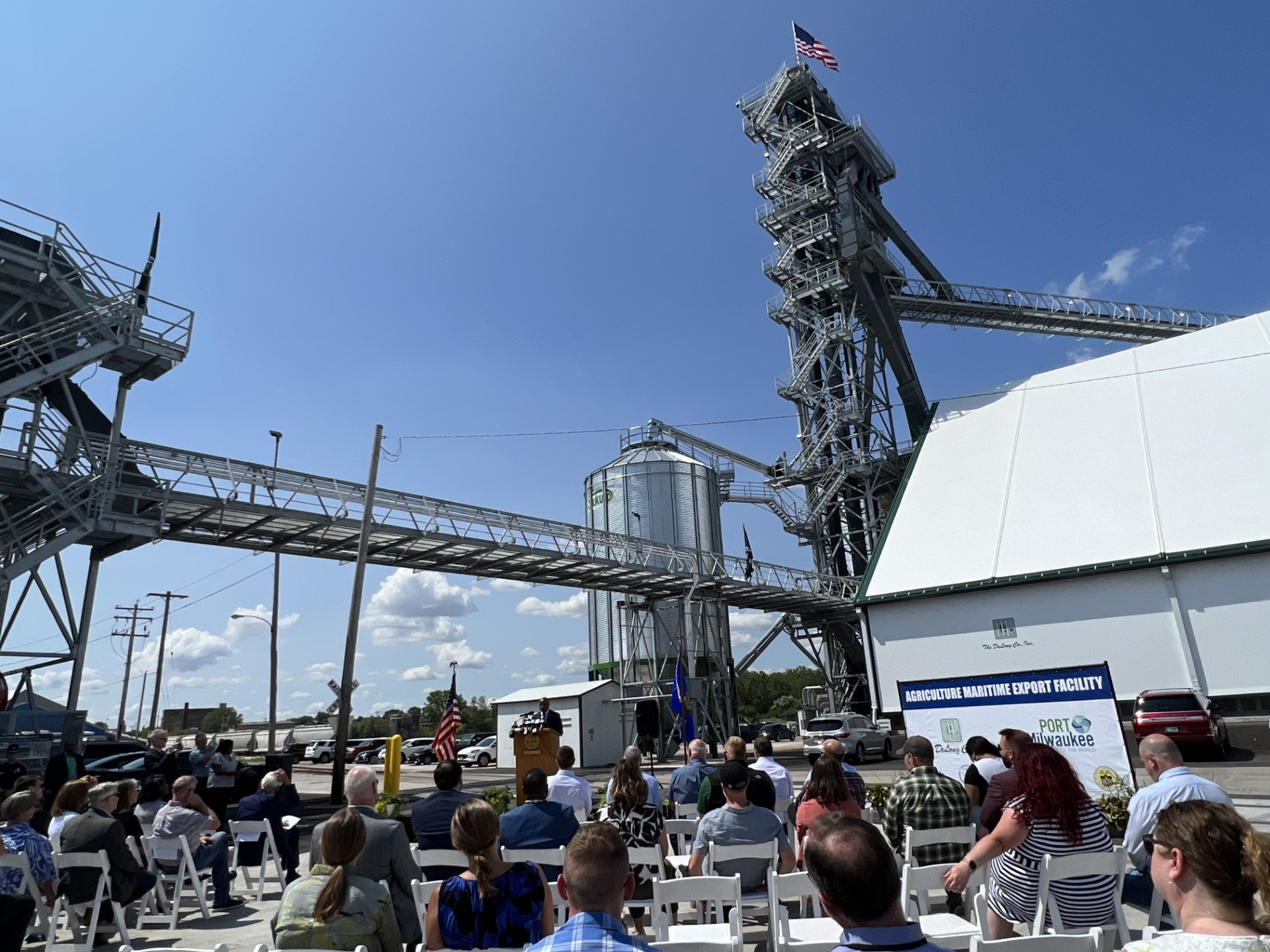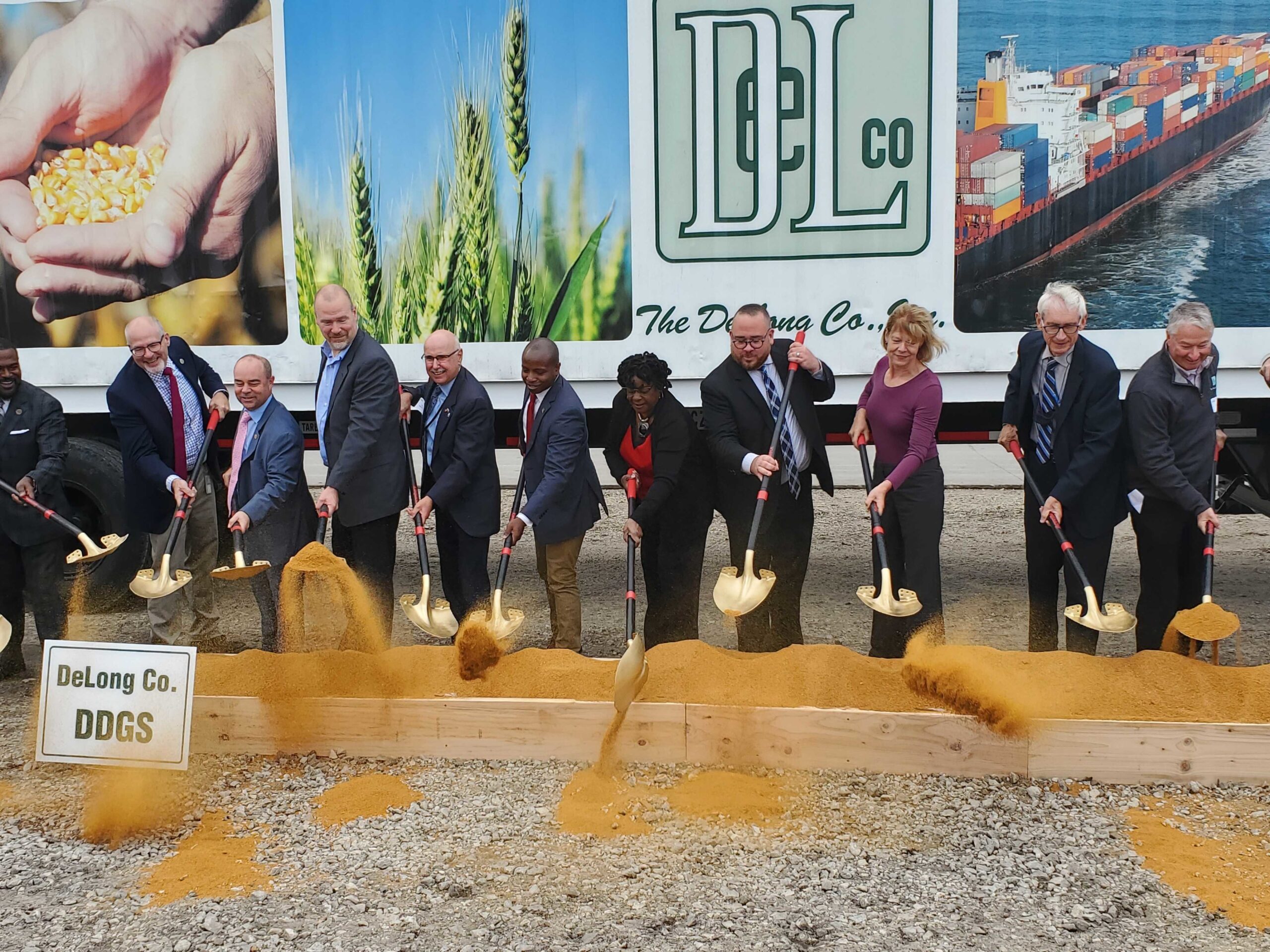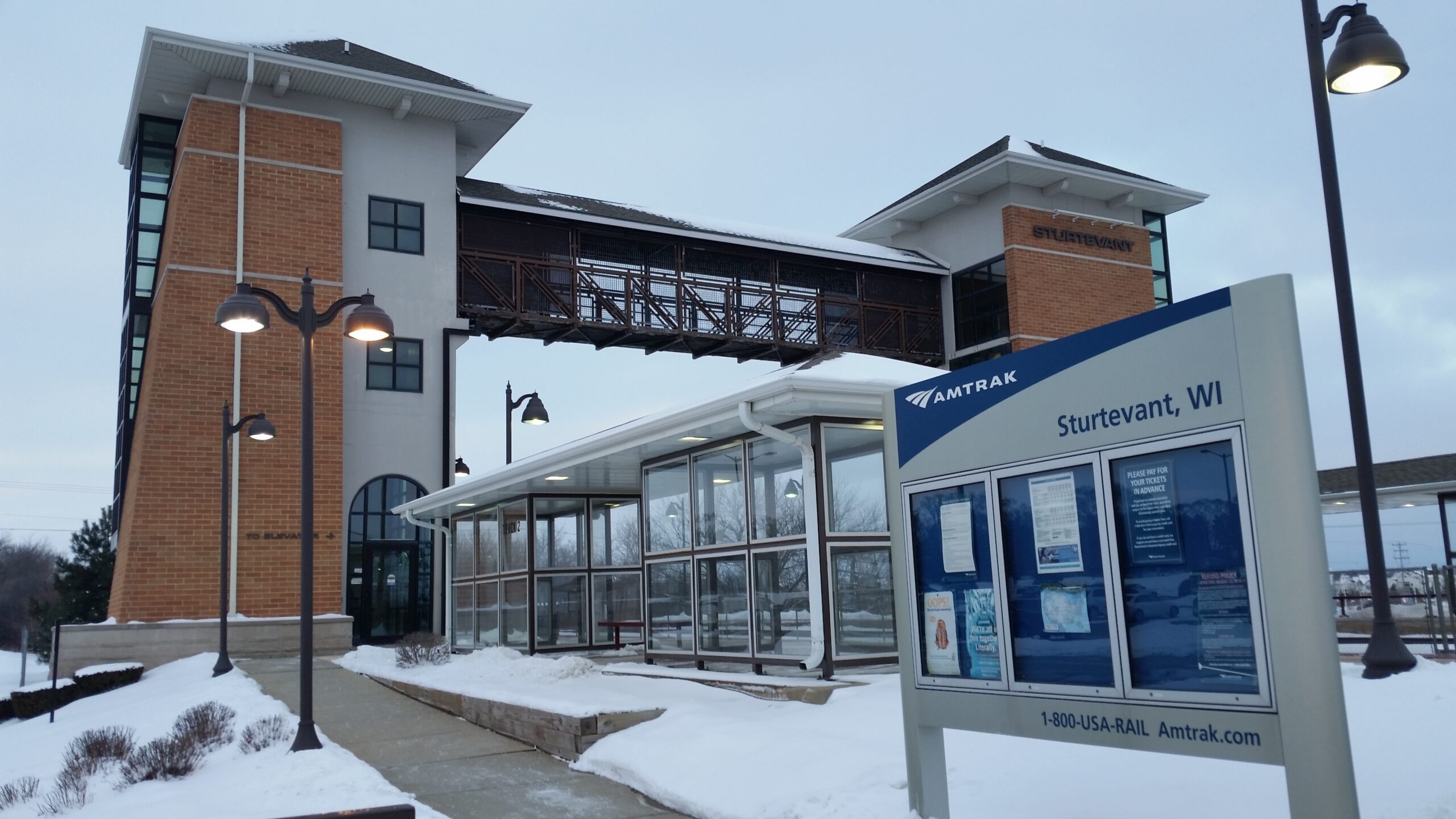Members of a new cargo partnership in the Twin Ports say their deal with a railroad company will make them more competitive and provide businesses with more cost-effective access to new international markets.
The Duluth Seaway Port Authority and Lake Superior Warehousing have partnered with Canadian National Railway to ship containers across North America via rail.
On Tuesday, a rail car mover pulled the first six shipping containers that arrived in the Twin Ports on CN’s rail network. Vanta Coda with the Duluth Seaway Port Authority said the partnership is a game-changer.
Stay informed on the latest news
Sign up for WPR’s email newsletter.
“Most of this traffic would just pass us by without this service offering. It is really a big deal for us,” Coda said. “Now, we’re plugged into one of the premiere networks within the nation, within North America.”
Coda said they’ll be able to ship containers by rail to the Atlantic, Pacific and Gulf Coasts. Jonathan Lamb, president of Lake Superior Warehousing, said they expect the partnership to draw in more business.
“We expect to and hope to be a very strong player to support forest products exports,” he said. “We certainly hope to be a major opportunity for the ag community to have new gateways to get their product out. All the farmers out there in the upper Midwest, we certainly see this as an opportunity to help them out and allow them to access new markets that they don’t have today.”
The rail terminal provides businesses in northern Minnesota, Wisconsin and Michigan with a regional transportation hub instead of relying on coastal ports. Coda and Lamb hope the partnership will support local industries and their efforts to expand.
“We do have interest from some local manufacturers and we are pressing them hard to join us in this effort and we’re trying to get them the most advantageous supply chain numbers that we can,” Coda said.
The containers that come through the Twin Ports by train are larger than those that can be transported on lakers through the St. Lawrence Seaway System. Through CN’s rail network, containers arrive on rail cars that are then unloaded and transferred to trucks for shipment across the Midwest. They allow businesses to ship more product via rail than they could by truck, saving companies on freight costs.
“We put it on a train. That train takes it from here say to Prince Rupert or to Vancouver and then it gets on a ship and it goes to China or it goes to South Korea or Japan or wherever it is to access that market,” Lamb said.
David Claypool, a sales manager with Lexington Manufacturing out of Brainerd, Minnesota, said his company expects to save around a third in freight costs.
“For us, it’s really been our ability to move cargo quicker, get it to a location. This is really close to where we are in Brainerd. It’s much more convenient. We have warehousing capacity here. It’s very advantageous for that,” Claypool said. “We’ve basically been shipping through the Twin Cities. The availability of storage area down there is very limited and quite honestly is just a lot less expensive for us to ship through Duluth.”
JJ Ruest, CN executive vice-president and chief marketing officer, said in a news release that the partnership opens up a new supply chain for the Twin Ports.
“CN is pleased to bring its extensive contacts in international markets, freight-forwarding knowledge, and customs and marketing support to the Twin Ports,” Ruest said in the release.
CN’s rail network spans around 22,000 miles, serving ports in Canada, the Great Lakes and the Gulf Coast.
Wisconsin Public Radio, © Copyright 2024, Board of Regents of the University of Wisconsin System and Wisconsin Educational Communications Board.

